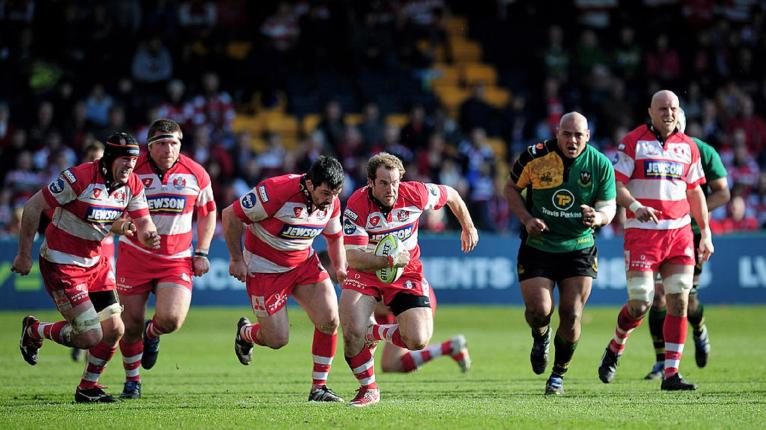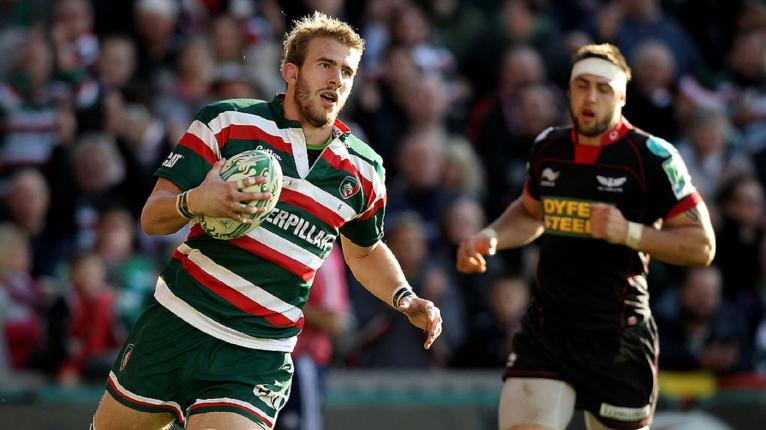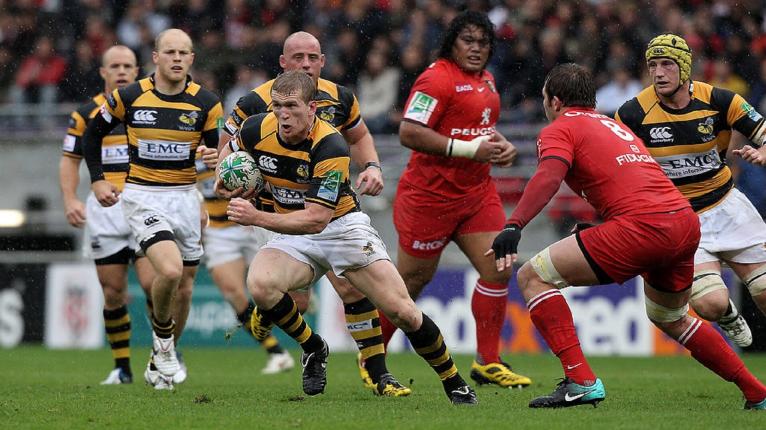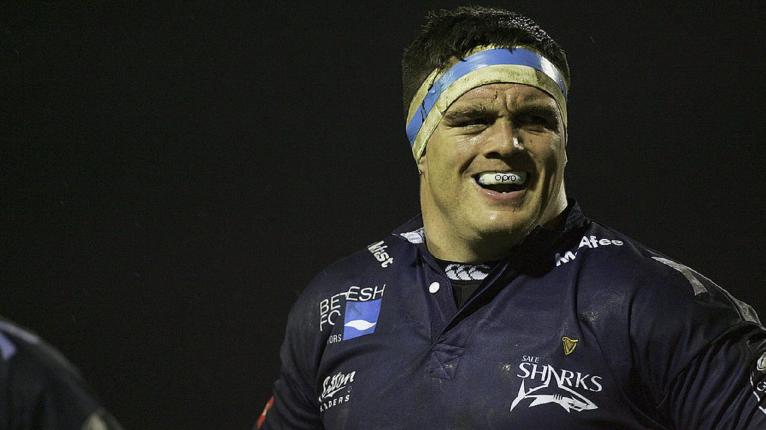Every Premiership clubs' star players 10 years ago

Ten years is a long time in any environment, not least one as volatile and ever-changing as professional rugby, and the differences between the game then and the game now are stark.
Whilst plenty has changed in terms of the way the game is played and the off-field challenges that professional club rugby faces, nowhere is the change more dramatic than in the playing personnel. A decade is enough time for a player to rise from obscurity, dominate and then fade away, all within that span of years.
With rugby having shuddered to a halt all over the globe, we take a nostalgic look back to the year 2010 and at what players were leading the way for their Gallagher Premiership rugby clubs at the end of the millennium’s first decade. Prepare to feel very old indeed.
Ten years ago, Bath were coming out of a drug scandal that a number of their players were embroiled in, though that should not diminish what a talented group of players the club had to call on at the time.
The tight five was loaded with difference-makers, not least so the trio of Danny Grewcock, David Flatman and Lee Mears, all of whom gave the club consistency and a physical edge up front. Butch James and Olly Barkley were a pair of gifted playmakers and they were provided ball by one of the best nines in the competition, Michael Claasens.
That all said, we have opted for Nick Abendanon, with the current Clermont full-back the just beginning to come into his considerable prime. He was never loved with the same fervour at international level as he was at club, despite excelling with the England Saxons, though that would be to the benefit of Bath, for whom he amassed over 200 appearances before heading to France.
Bristol Bears
Having been relegated from the Premiership and saying goodbye to influential figures such as Joe El Abd, Shaun Perry and David Lemi, this was a testing period in Bristol’s history. Following that relegation, Bristol would spend the next seven seasons in the Championship.
Kiwi scrum-half Jason Spice took on the captaincy following El Abd’s departure and played a key role moving forward, as did the Arscott brothers, Luke and Tom, in the back three. Mako Vunipola made his debut for the club, and Roy Winters and Ian Grieve continued to be impactful figures in the pack.
Though quality players had left, and the club’s squad wasn’t necessarily as talented as it had been in previous seasons, fly-half Adrian Jarvis continued to lead from the front, each and every week. His kicking and game-management ensured that Bristol were competitive throughout the season and though they fell at the final hurdle to Exeter, they had been the most consistent side in the competition, thanks in large due to Jarvis’ contributions.
Exeter Chiefs
It’s hard to believe, but it was 10 years ago that Exeter Chiefs finally won their promotion from the Championship and made it to the promised land of the Premiership.
A veteran Chris Budgen was still playing at 36 years of age, whilst England prop Ben Moon was just starting out with the club as a youthful 19-year-old. Plenty of other iconic names from Exeter’s history were also plying their trade at the club in 2010, such as Gareth Steenson, James Hanks, Richie Baxter and Matt Jess. Phil Dollman was in his first season with the club, too.
We have opted for Tom Johnson, though, with the flanker’s powers beginning to peak. He was incredibly valuable to Exeter in the Championship, before going on to become one of the best players in the Premiership at the position. He also became the first Exeter player to play for England upon the club’s promotion to the top tier of English rugby.
The latest in our ‘Future of Rugby’ series takes a look at a potential U23 XV for the sixth-ranked side in the world, Wales.
– as picked by @alexshawsport ???https://t.co/1dKg9rQx5v
— RugbyPass (@RugbyPass) April 12, 2020
Gloucester
Drug scandal aside, Gloucester weren’t in an altogether different situation to their local rivals Bath 10 years ago, desperately attempting to rediscover the glories of the past in a competition that had become dominated by London Wasps and Leicester Tigers.
Household names like Jonny May, Charlie Sharples and Freddie Burns were all breaking through, whilst stalwarts like Olivier Azam, Mike Tindall, Luke Narraway and Olly Morgan all had their moments. Nicky Robinson was a steady hand on the tiller at fly-half, Carlos Spencer, though at the tail-end of his career, was also available, and perhaps the biggest challenge to our nominated player came from Fijian Akapusi Qera, with the flanker in his pomp at the time.
We couldn’t look passed James Simpson-Daniel, however. Just the 10 caps for England is too scant to do his ability justice and the elusive and eye-catching wing is still regarded today as one of the very best players to grace the Premiership in the professional era. Away from the international stage, a tally of 120 tries for Gloucester tells the true story of the influence “Sinbad” had on English rugby.

Harlequins
At this point 10 years ago, Harlequins were still rebuilding from the one season they spent in the Championship, though they were certainly on the right track, as just two seasons later they would lift their one and only Premiership title to date.
The club’s back three was electric, as Ugo Monye, David Strettle, Tom Williams and Mike Brown jostled for position, whilst talismanic No 8 Nick Easter regularly ensured they had plenty of front-foot ball to work with. Danny Care was showing his worth at half-back, whilst Joe Marler and George Lowe were just moving from academy deals onto senior contracts, with the latter beginning to impress alongside the dominant Jordan Turner-Hall.
Despite the plethora of quality, particularly in the back line, the only person this accolade was going to go to was Nick Evans. The Kiwi fly-half will go down as one of, if not the best foreign import to the Premiership in the professional era and his unerring boot and playmaking skills were invaluable to a club that was still trying to put the demons of “Bloodgate” behind it.
The Springboks’ defence is held together by a special group of athletes, that without, could see the system malfunction. @bensmithrugby on who the Boks cannot afford to have missing when the Lions arrive. ?https://t.co/CSPXaQvI87
— RugbyPass (@RugbyPass) April 12, 2020
Leicester Tigers
This would prove to be Tigers’ penultimate Premiership title, to date, and will be remembered for their final win over Saracens, with the Londoners beginning their steady march to domestic and European dominance.
Where do you even start with this team? Ben Youngs and Toby Flood struck up a potent partnership in the half-backs, Lewis Moody and Alesana Tuilagi were still prowling the pitch and Geoff Parling was coming into his own as a lineout forward. Julian White was passing on the final of his tricks to a young Dan Cole, Marcos Ayerza was excelling on the loosehead and even a raw Manu Tuilagi was beginning to make his presence felt in the East Midlands.
It was tough not giving this spot to the ultra-consistent Ayerza, but with “best” or the player whose peaks were the highest in mind, there was no answer other than Tom Croft. A physical freak, Croft had excelled the previous summer on the British and Irish Lions tour of South Africa, and he bordered on unplayable for opposition sides when he was fully fit. Even in a horribly injury-ridden career, Croft still managed to win an impressive 40 caps for England over seven years and made two Lions tours.

London Irish
This was, more or less, the peak for London Irish in the Premiership. The previous season they had ended up as runners-up to Leicester and their squad was loaded with talent, both homegrown and imported, as the club was yet to face the challenges retaining players that have since beset it.
The Armitage brothers, Delon and Steffon, were front and centre of Irish’s successes at that time, as were free-scoring wings Topsy Ojo and Sailosi Tagicakibau. Faan Rautenbach brought physicality up front alongside a young and developing Alex Corbisiero, Nick Kennedy ruled the skies in the second row, scrum-half Paul Hodgson brought tempo and the veteran Mike Catt was still plying his trade.
If there was a more potent centre than Seilala Mapusua in the league, though, it would be news to us. The Samoan international was a physical force with an underrated handling game, and he was frequently at the heart of Irish’s impressive attacking game at the time. When he left in 2011, his presence was one of the few in Irish’s exodus of stars that couldn’t be replaced by the club’s productive academy.
London Wasps
This was the end of Wasps’ golden era at the top of English rugby and though they still boasted one of the best squads in the league, it was shortly to be decimated by player departures and retirements, as the now Coventry-based rugby club struggled financially.
Veterans such as Phil Vickery, Simon Shaw and Serge Betsen still prospered, as did a back three that boasted Paul Sackey, Mark van Gisbergen and the first glimpses of an untested Christian Wade. Joe Worsley helped tutor a raw James Haskell into becoming Lawrence Dallaglio’s successor, and Danny Cipriani and Dominic Walduock flourished as fresh-faced and skilful attacking players.
Similar to Leicester, Wasps’ best player at this period would see his career cut frustratingly short by injury, though there was no denying the excellent ability of Tom Rees. The openside had taken to senior rugby like a duck to water alongside stalwarts such as Worsley and Dallaglio and he was seemingly on a path to not only England caps, but potentially the England captaincy, too. He could have been England’s answer to Richie McCaw, were it not for a knee injury that prematurely ended his playing career.

Northampton Saints
At this point 10 years ago, the foundations were being laid at Franklin’s Gardens for the side that would go on to lift the title in 2014, with many of the stalwarts of that side making their way to the East Midlands at this period of time. It was just their second season back in the competition after having been promoted from the Championship.
Props Brian Mujati and Soane Tonga’uiha took up their spots either side of a fiery Dylan Hartley, where they were supported by the consistent Phil Dowson and a young Courtney Lawes, who was beginning to make a physical impact in senior rugby. Lee Dickson and Stephen Myler were the perfectionists in the half-backs and Ben Foden was carving up at full-back following his move from Sale Sharks.
As far as the man leading the way goes, though, this may have been Chris Ashton’s finest season in the black, green and gold. His 16 tries that campaign were the most he would record in a Premiership season and his predatory finishing made him a nightmare for opposition defences. It set him on a path to winning the first of his 44 England caps in the 2010 Six Nations.
Sale Sharks
Sale’s sole Premiership title in 2006 was a few years prior to this and the exodus had begun in earnest, with the likes of Sébastien Chabal, Juan Martín Fernández Lobbe, Jason White and Luke McAlister having all departed.
Despite ending up 11th that season, Sharks weren’t without talent. David Seymour had moved from Saracens and was embarking on an excellent stint as the club’s starting openside, whilst the half-back pairing of Richard Wigglesworth and Charlie Hodgson were very impressive, before making their moves down to Saracens. As wing tandems go, there haven’t been too many more exciting than Mark Cueto and Ben Cohen, either.
We’ve opted for England international and British and Irish Lion Andrew Sheridan. Though the gargantuan loosehead had his fair share of injury problems later in his career at Sale, he was as potent a scrummager as the competition or England had at the time. Even Sheridan would end up leaving the club a couple of years later, but at this time he was still the spearhead of the club’s attempts to recapture their mid-2000’s glories.

Saracens
Although the season ended in defeat at Twickenham to Leicester, this was the beginning of the era that would see Saracens go on to dominate English rugby, and plenty of their current stars were getting their first proper experiences of senior rugby.
The likes of Owen Farrell, Jamie George, Jackson Wray and Alex Goode were being blooded, with the latter a more regular feature at full-back, whilst Wales’ Michael Owen and New Zealand’s Justin Marshall provided invaluable experience. The South African revolution was also taking place, with Neil de Kock, Brad Barritt, Schalk Brits, Mouritz Botha and Ernst Joubert all taking on important roles, not to mention Namibia’s Jacques Burger.
Saracens were able to call upon England captain Steve Borthwick in the second row, too, and the lock is our pick here. Borthwick’s set-piece excellence was at the forefront of the club’s march to the Premiership final and he helped lay the foundations that the likes of Maro Itoje and George Kruis have since built upon. He was as key to forming the “Wolfpack” mentality and setting standards as any player during this period.
South Africa Rugby has reportedly formulated a radically modified schedule to save the season. https://t.co/kv0WvIvDvk
— RugbyPass (@RugbyPass) April 12, 2020
Worcester Warriors
The year 2010 heralded a challenging time for Worcester, as they were relegated from the Premiership, something which they would repeat four years later, and the club still haven’t managed to finish anywhere above 10th in the Premiership in the subsequent years.
Matt Mullan and Tom Wood were rising to prominence, with both players setting themselves up for moves away from the West Midlands, whilst the same was true of the clinical wing pairing of Miles Benjamin and Marcel Garvey. Graham Kitchener was improving quickly, Pat Sanderson provided veteran experience, Aleki Lutui was consistent at hooker and former All Black Rico Gear was also on hand at the time.
Although his impact in the 2009/10 season was limited by a serious knee injury he suffered in the previous campaign, Chris Pennell was already cementing himself as one of the most exciting and consistent performers in the Premiership. A homegrown product, Pennell rose quickly to prominence and would go on to become one of the club’s truly legendary figures, with the full-back still performing well for Worcester at time of writing.































Comments on RugbyPass
Leinster are going to win the world cup.
13 Go to commentsSuper Rugby desperately needs to lose at least 2, but up to 4 teams. Rebels quietly going bankrupt would have made that a bit easier. Teams like the Rebels and Force serve only to weaken Australian Rugby and Super Rugby more widely. In 13 years in the comp the Rebels are yet to win more games than they lose in a season, have never finished in the top half of the competition, and have come dead last a number of times. The Western Force, barring a brief stint of mediocrity under John Mitchell from 2007-2009 have been even worse. Sadly it’s hard to see a future for Moana Pasifika in Super Rugby. Likewise I think the writing is on the wall for the Highlanders, it’s hard to see how NZ rugby can continue to support 5 SR teams, and population distribution suggests one team in the south island would make the most sense.
42 Go to commentsNice that Connor Evans is happy to stay on here, that JD Schikerling is returning and Steven Kitshoff. Dobbo is careful to bring back just anybody but having a new financial lease of life, it has made the Stormers a more attractive club. On top of being good quality, having the financial backing helps a lot
1 Go to commentsEngland-qualified too, I believe.
1 Go to commentsThis might turn out to be emblematic of a real issue in Irish rugby. Ireland have one of the best -if not the best - senior sides in the world, and one of the best under 20s sides as well, but don’t seem to be giving graduating under20s players many opportunities to break through into URC starting lineups. There is a risk that a lot of the junior talent they are developing will either be wasted, or lost to other nations.
1 Go to commentsYou ask good questions, Nick. The group who have put together the proposal to play out of Tarneit and participate in the growing of the ground’s capacity are not a bunch of white knights who have been dragged in post-crisis; they were around whilst the Rebels accummulated $23m in debt. Why do we come up with ideas that might make the franchise affordable after it’s broke and not when it might have prevented the trainwreck this offseason was? As for Gordon/Kellaway v Lolesio/Wright, they are both good options. I think the former are better rugby players but the goal kicking of Noah may be decisive when Schmiddy makes his choices. I know Harry Jones has the hots for Edmed but I think it’s one of his few poor choices and he and Jorgensen aren’t close to the other pairs. By coincidence, the wife and I went into town over the weekend to watch Brian Cox and Patricia Clarkson in Long Day’s Journey into Night. Beautifully acted but it was 3.5 hours in the chair and very hard work. Like the Rebels, there were only small bursts of joy to go with a lot of bad news and a depressing story line. In the end, I was hoping it would end and I could give my sore butt a break. Again, familiar.
42 Go to commentsGood decision, very good player but not international quality. But so was Jamison Gibson Park …..
3 Go to commentsLoose forwards always look good going forward and winning. It’s the same loose forwards for the Crusaders and the Canes this year as last year. Too much of the shiny new things getting noticed here while older consistent ones getting bagged. It’s early days. Calm the farm.
6 Go to commentsThanks Nick, and on the money. We tend to be apathetic until something REALLY BAD happens, then we aren't! At least this applies to the Reb players and coach, if not the spectators. They seem to be getting very quick ball at times. Have they altered something, or is it just all of the skills coming together at the right time? It seems almost the opposite of the Reds, who started the season with quick ball, but haven't been showing that in the last 3 losing games. Is it attitude (McDermott hasn't looked “right” to me for 3 weeks), or something else?
42 Go to commentsGood summary. As said, Sevu Reece has been electrifying for the Crusaders. Great try and he has been everywhere. Amazing he is now equal with Caleb Ralph , club record of 52 tries for the Crusaders. That record beckons. Good to see Dallas McLeod getting regular starts at last. A big few weeks are ahead.
6 Go to commentsGood article/interview.As was said Christian Lio-Willie was barnstorming when he came on for the Crusaders. What happened at the end, self-explanatory.Captain fantastic Scott Barrett is due back soon as well, once they are back from Aussie. Great to see Ethan Blackadder back last week.
1 Go to commentsYou must have been watching one team, Andrew - and even then you missed the brightest star in the Chiefs pack - Naitoa Ah Kuoi, 2 turnovers, genuine line-out presence and grunt around the field, and the soft hands of a back.
6 Go to commentsHaha what a crock of sh!t these headlines are. Moorby’s best year was that first. Still doesn’t seem to have the same game about him as when he was fresh but has bounced back well this season to be playing consistent tight accurate footy
3 Go to commentsIt’s even dumber than Bernard Foley not kicking the penalty to touch in the Melbourne Bledisloe in 2022.
3 Go to commentsYes, they are traveling well but it’s early days. The Chiefs were in front with 20 to go while they snatched a last minute win v the Reds. Keep calm.
1 Go to commentsThe failure of the Irish system / rugby playing style to produce their own backs has them looking elsewhere for innovation and flair - not that Jordie has much flair. He’s a converted fullback. The Canes have plenty of other younger options.
13 Go to comments1.Watch Wallace Sititi be the wild card AB. A genuine full time no 8 2. Luke J like Sotutu has not delivered. 3. Chiefs have all the right cattle but badly miss the leadership of Webber. LJ is about as unconvincing as Sam Cane when under the pump. They had the winning of that game in the second half then fell apart.
6 Go to commentsYes the Rebels are showing signs of life because they are literally playing for their live -lihoods and thanks to their Australian attack coach. However they are still playing an essentially dull boring south african style for the rest of the time. And Geoff Parling must be the most useless lineout coach ever. Worse than Steve Hansen even. Interestingly we are starting to see more cheap shots and attempts to get away with cheating by Australian players, now they are being influenced by Joe Schmidt. It was exactly the same when Rennie started out as Wallaby coach and thru his tenure. Trying to teach Australians to play like kiwis doesn’t work, as the last 20 years has conclusively demonstrated. Especially when we are not as good at it as kiwis. Which of course is the whole idea …..
42 Go to commentsGreat signing, not sure where he’ll fit in though. As for him ‘playing alongside RG Snyman, that’s highly debatable given the likelyhood that the latter will spend most of the season on sick leave.
13 Go to commentsWowee!
13 Go to comments